So I just finished the board for Version 2, and here it is in glorious melty 3D
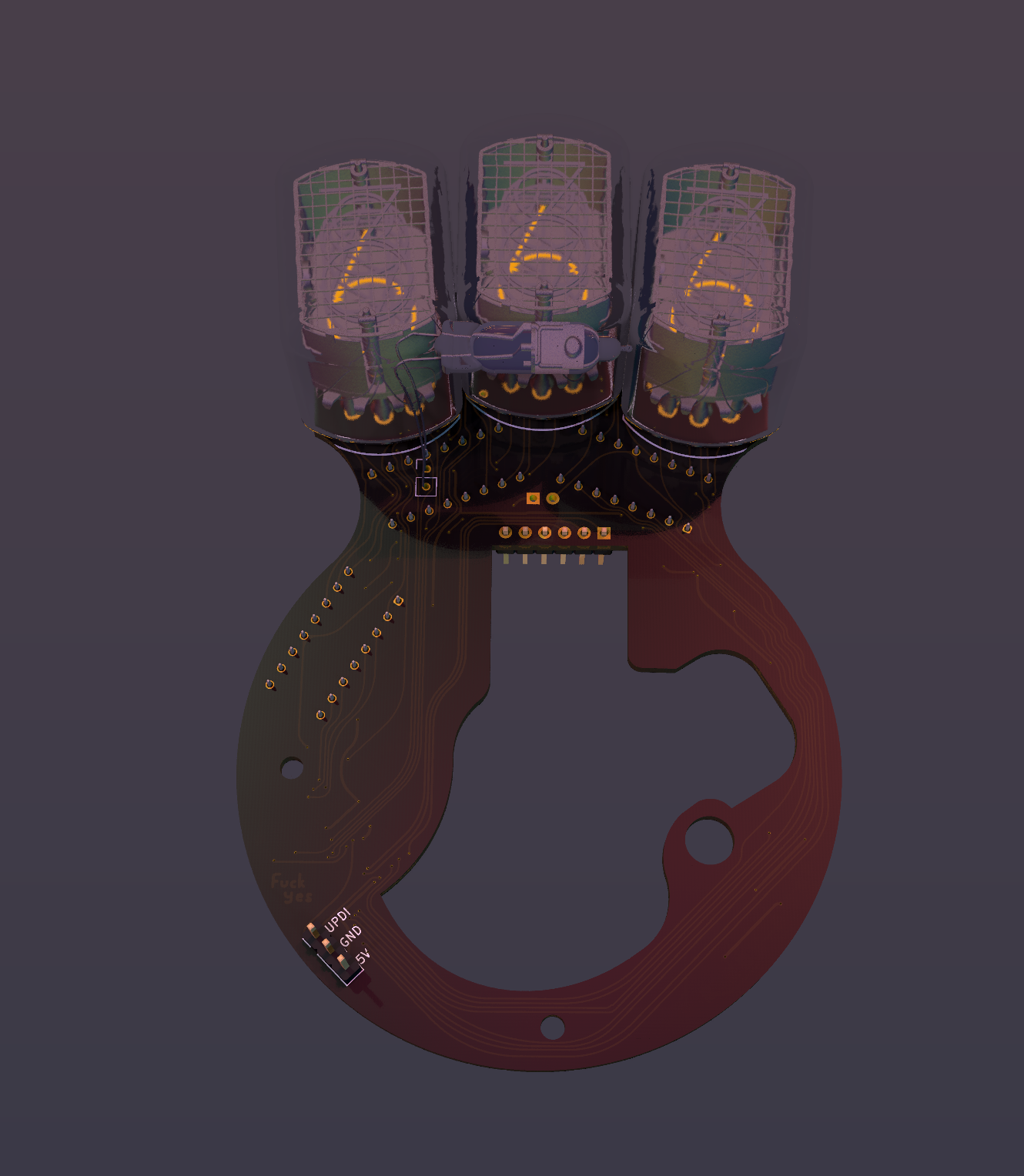
Here's a list of the things I've changed to make this something you could actually put together (unlike the last version.)
First, I needed a couple more pins on the microcontroller to make things a bit easier, so I went with the brand-spankin'-new AVR64DD28. It might be overkill for something like this but it's hella cheap, available and I really like the Dx series from Microchip.
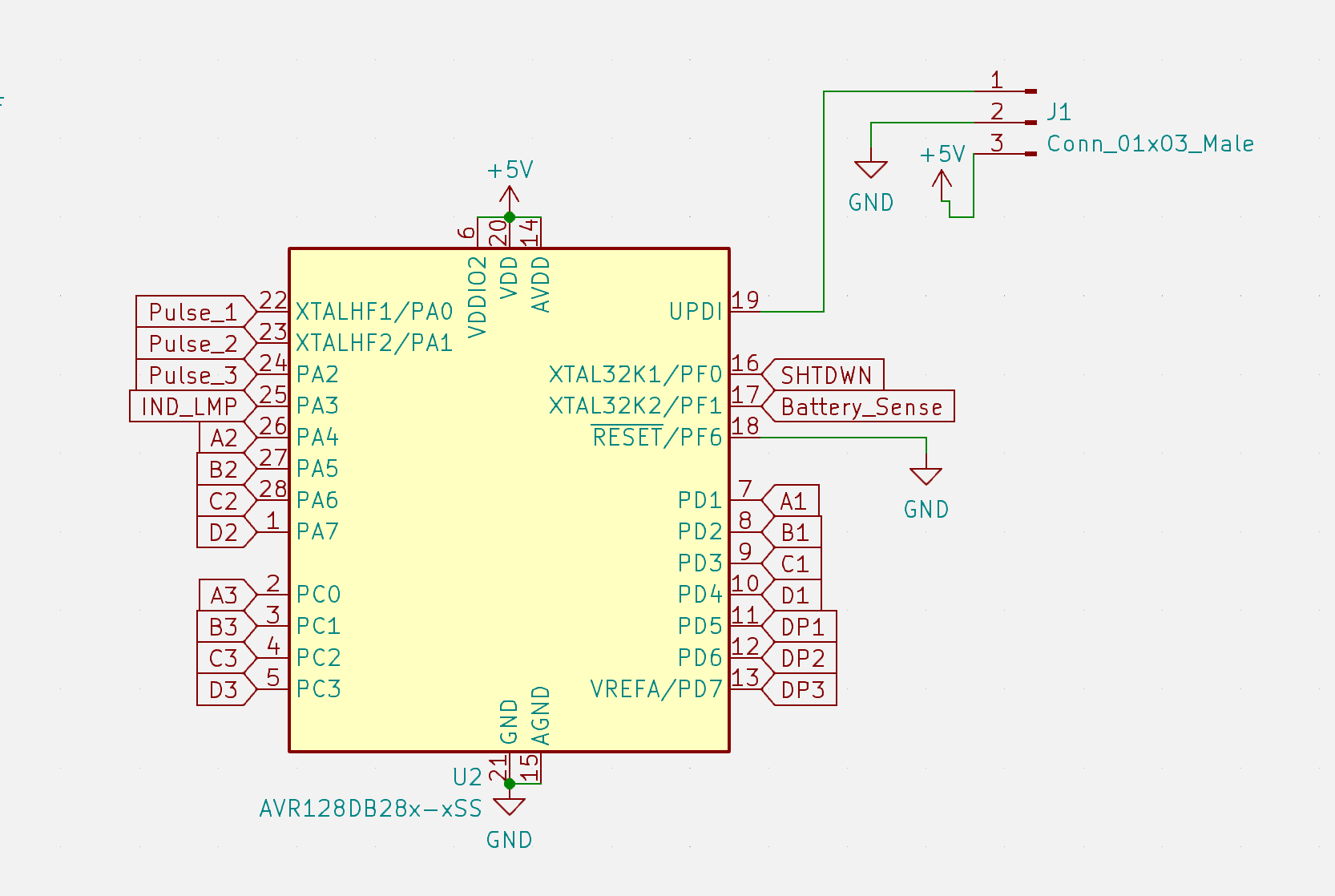
Those few extra pins let me do some things I wanted to do on the first one but lacked the GPIO (and no, I wasn't going to use a shift register.)
First, it lets me disconnect the high voltage supply when the battery voltage dips too low. I had that problem on the last one, where it runs the 9V battery down enough that it can't power the K155ID1s (which is crazy to me that they can brownout before the Nixie High Voltage module, it can run down to ~3V) and so the Nixies just show all the digits on in a weird glow. It senses the battery voltage with a voltage divider connected to an ADC.
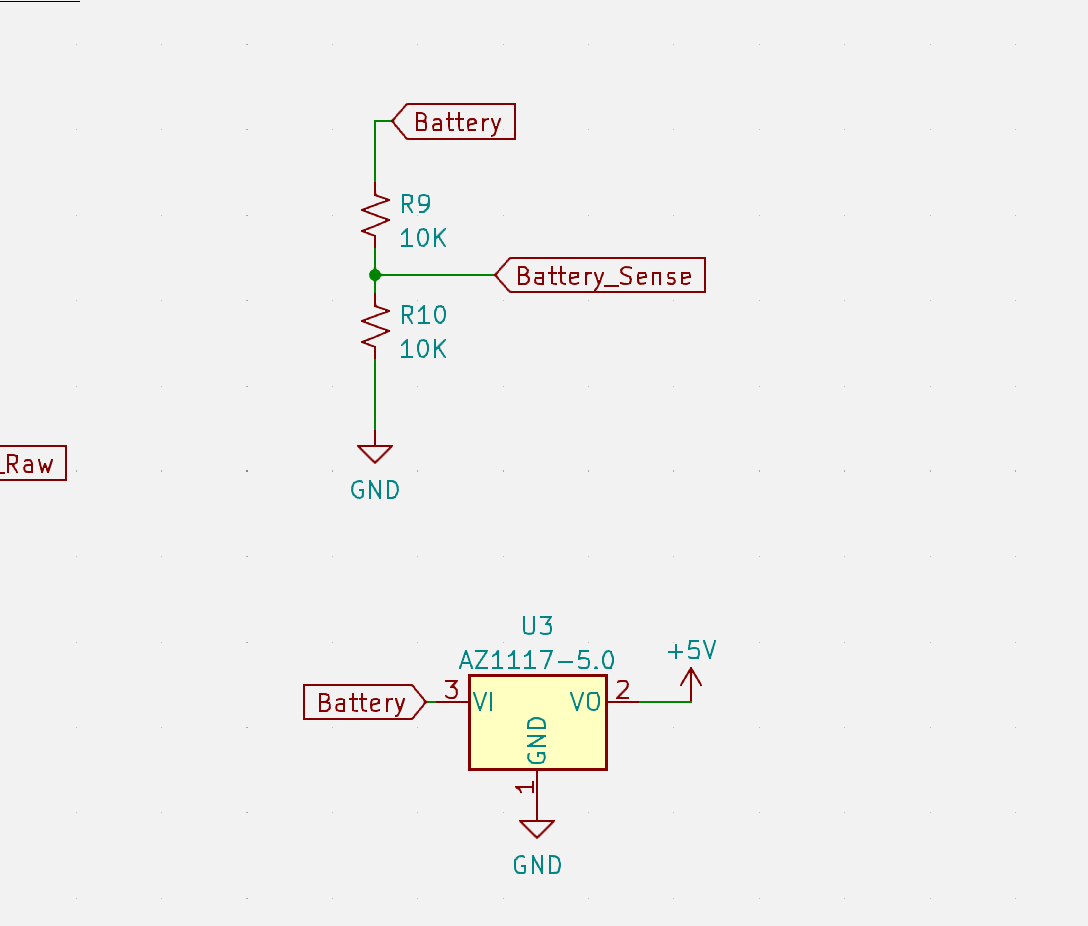
I also added a solder jumper to bypass the shutdown circuit in case it causes more problems than it's worth.
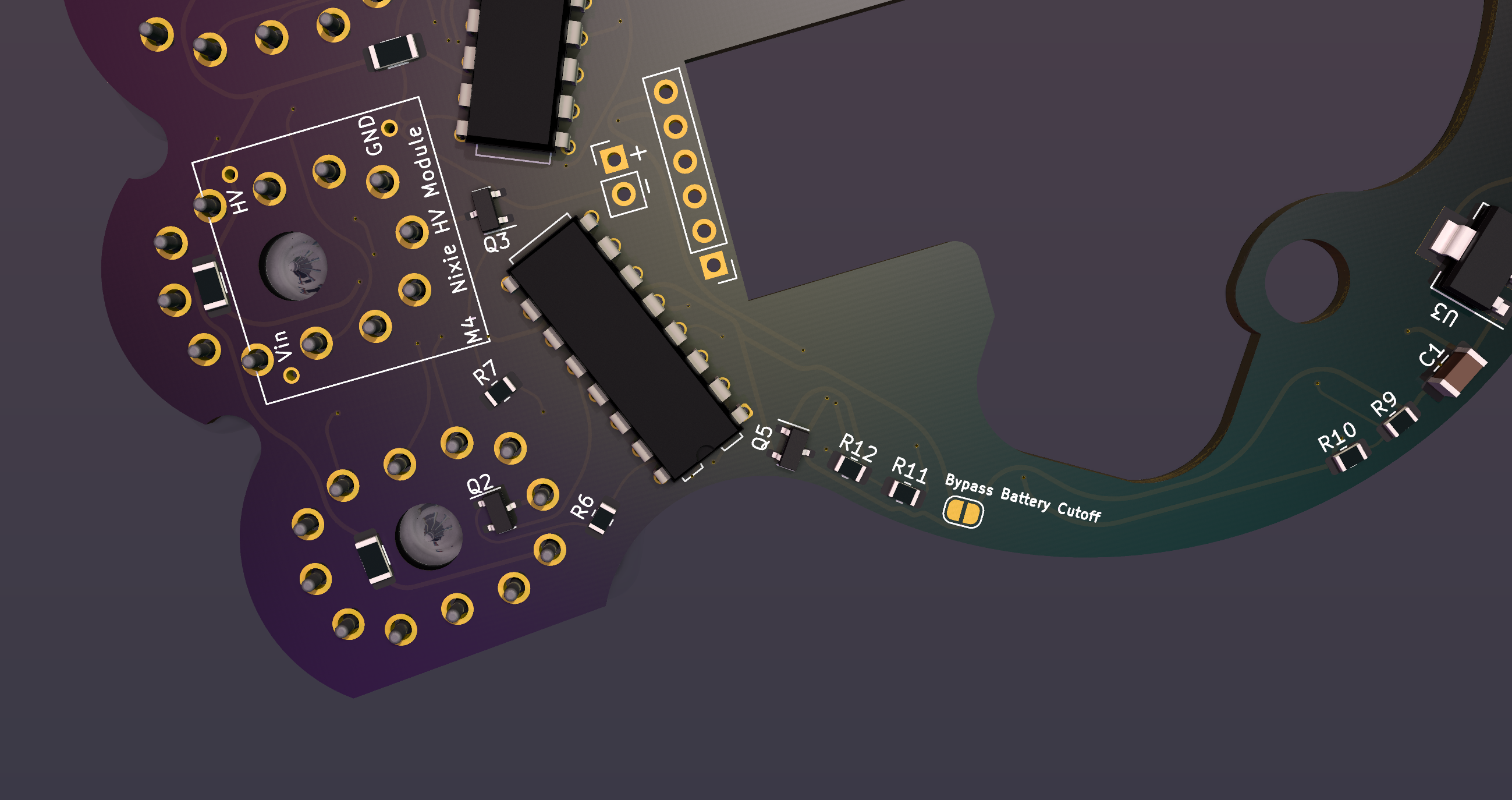
Also, now I have all 3 of the pulse pins connected to the uC. The hacky voltage divider on the last one was cool, but now I can choose which of the contacts to drive high and sense it on the other 2. Because the pulse signaling seems really simple at first, but I had a lot of trouble wrapping my head around it when it came time to actually code it. It just gets really confusing for some reason. Hopefully this overdone schematic symbol helped.
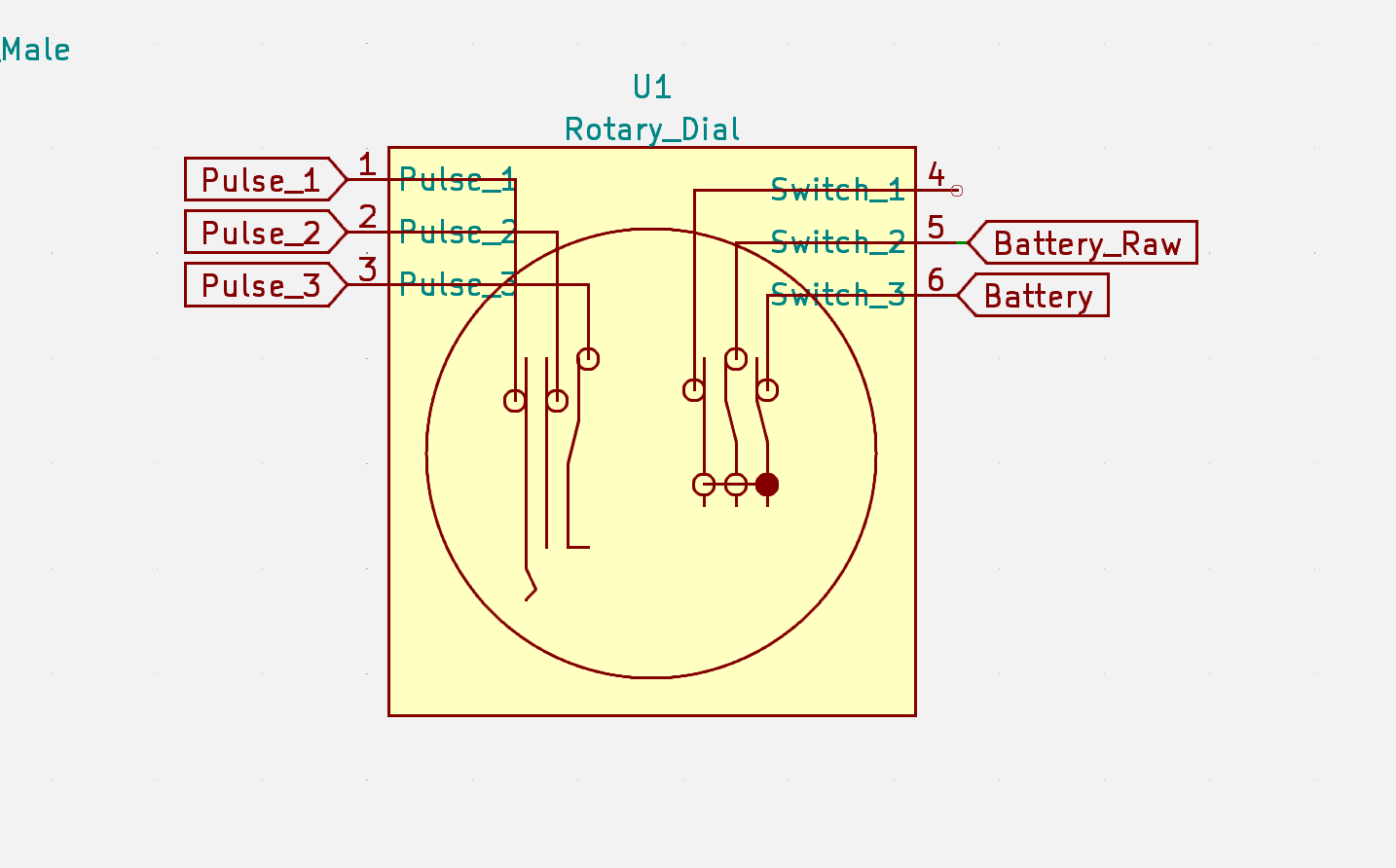
And now the little indicator light in the bottom middle of the Nixies is an IN-3 tube. I actually put this together on the rechargeable Version 1 I put together, and I like how it looks. I spent a ridiculous amount of time editing the 3D model and getting it into KiCad, but it was all worth it to have this render.
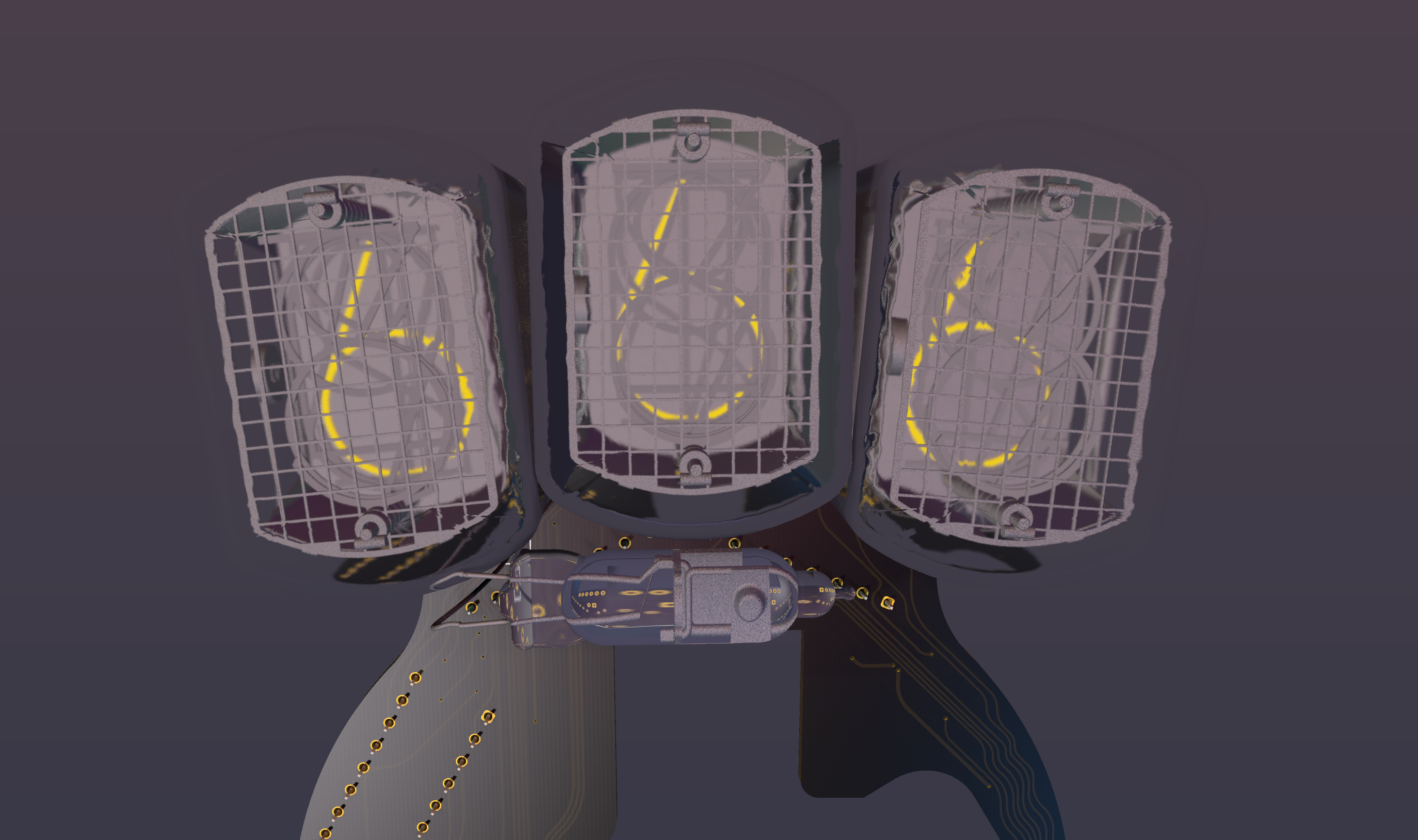
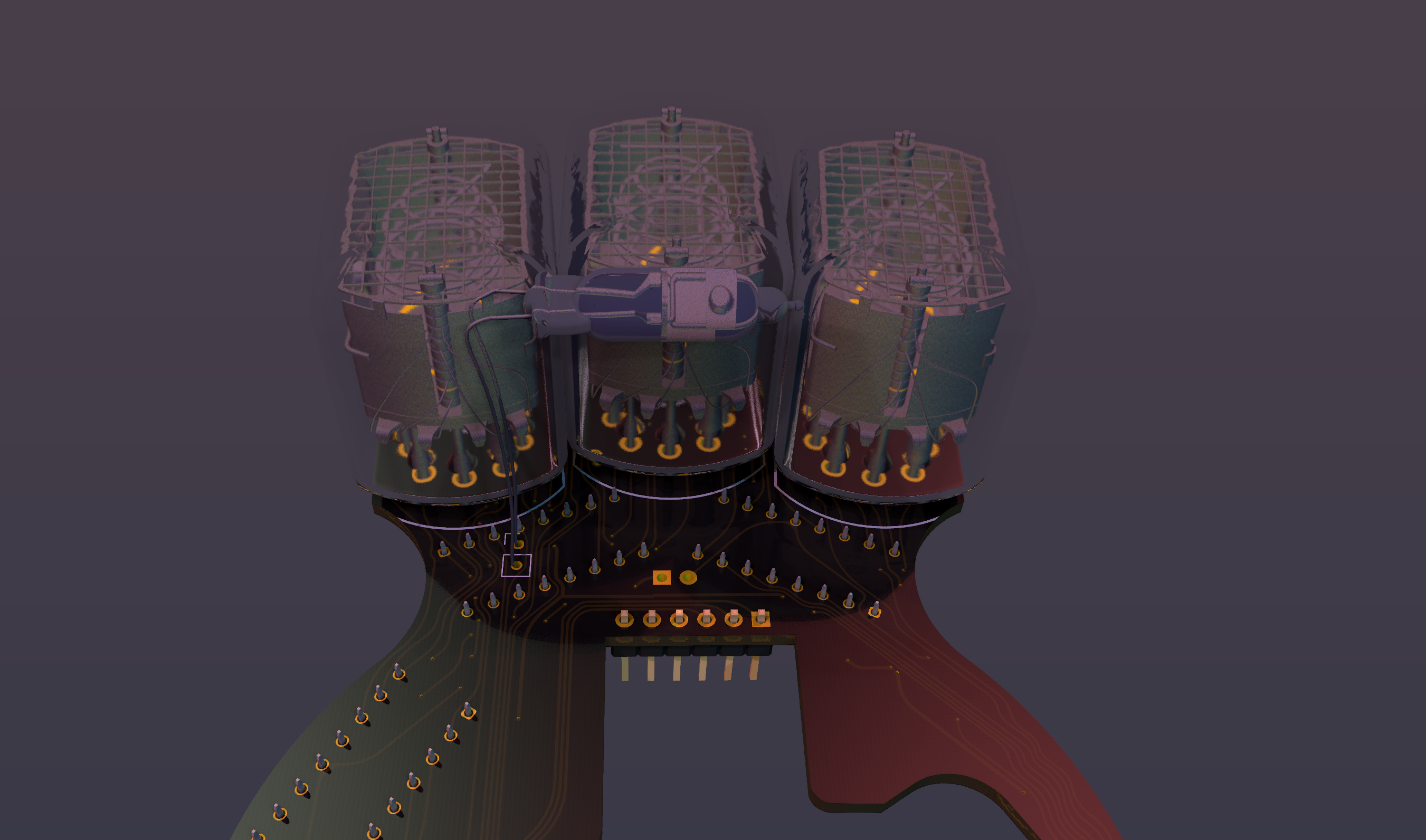
But most importantly, its super melty. I had to do a few components angled out of necessity, and it looked weird with all the other ones straight. So I leaned into it to keep a cohesive aesthetic. And also rounded the tracks because it looks rad.

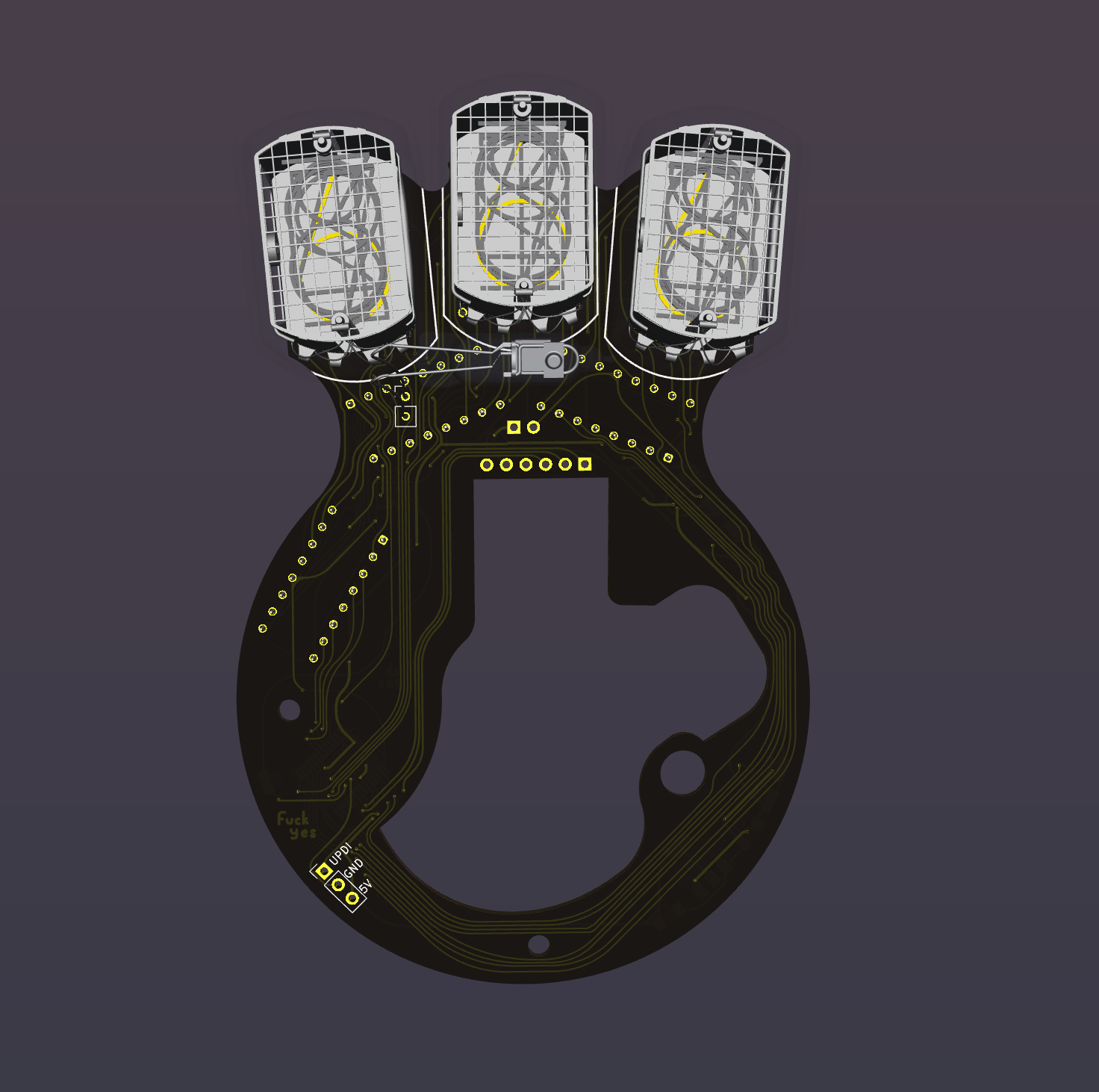
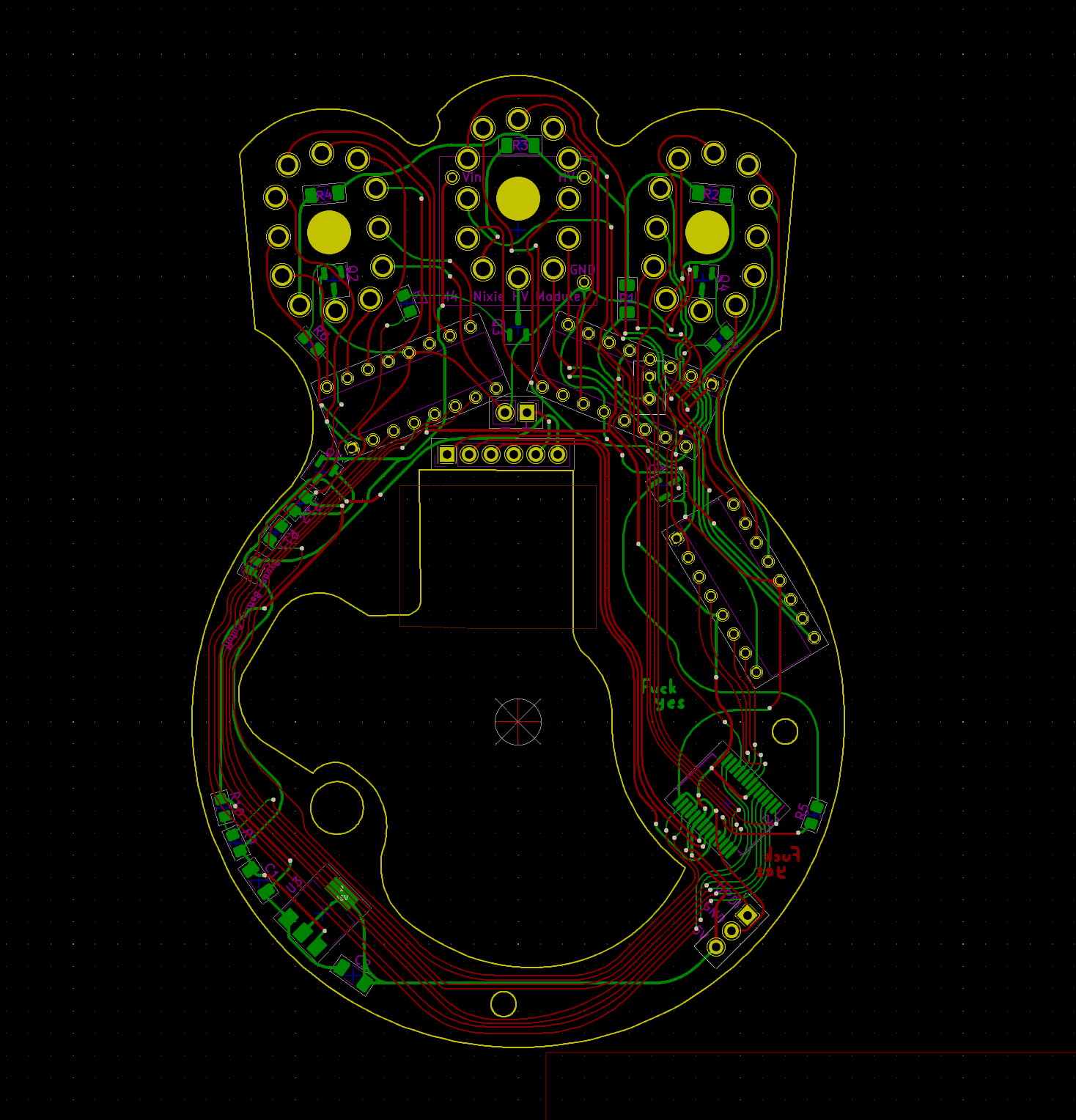
Anyway, The board hasn't come yet so I can't say whether it works or not, but I'll upload all the files if you're eager to build one of these yourself. And let me know if you are building one so I can walk you through some of the weirdness with how to disconnect the 3 arms on the back of your rotary dial.
Here's a few more screenshots
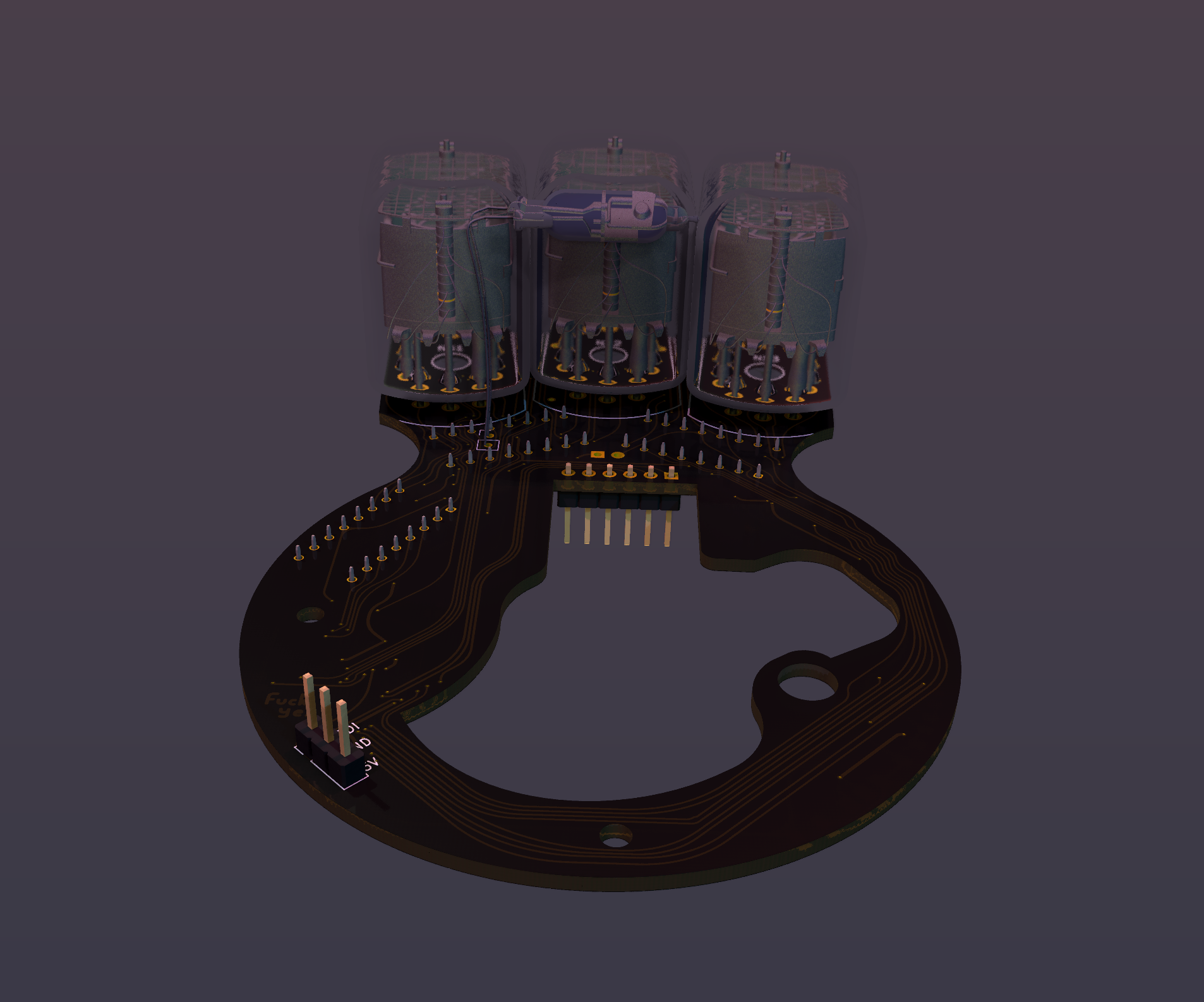
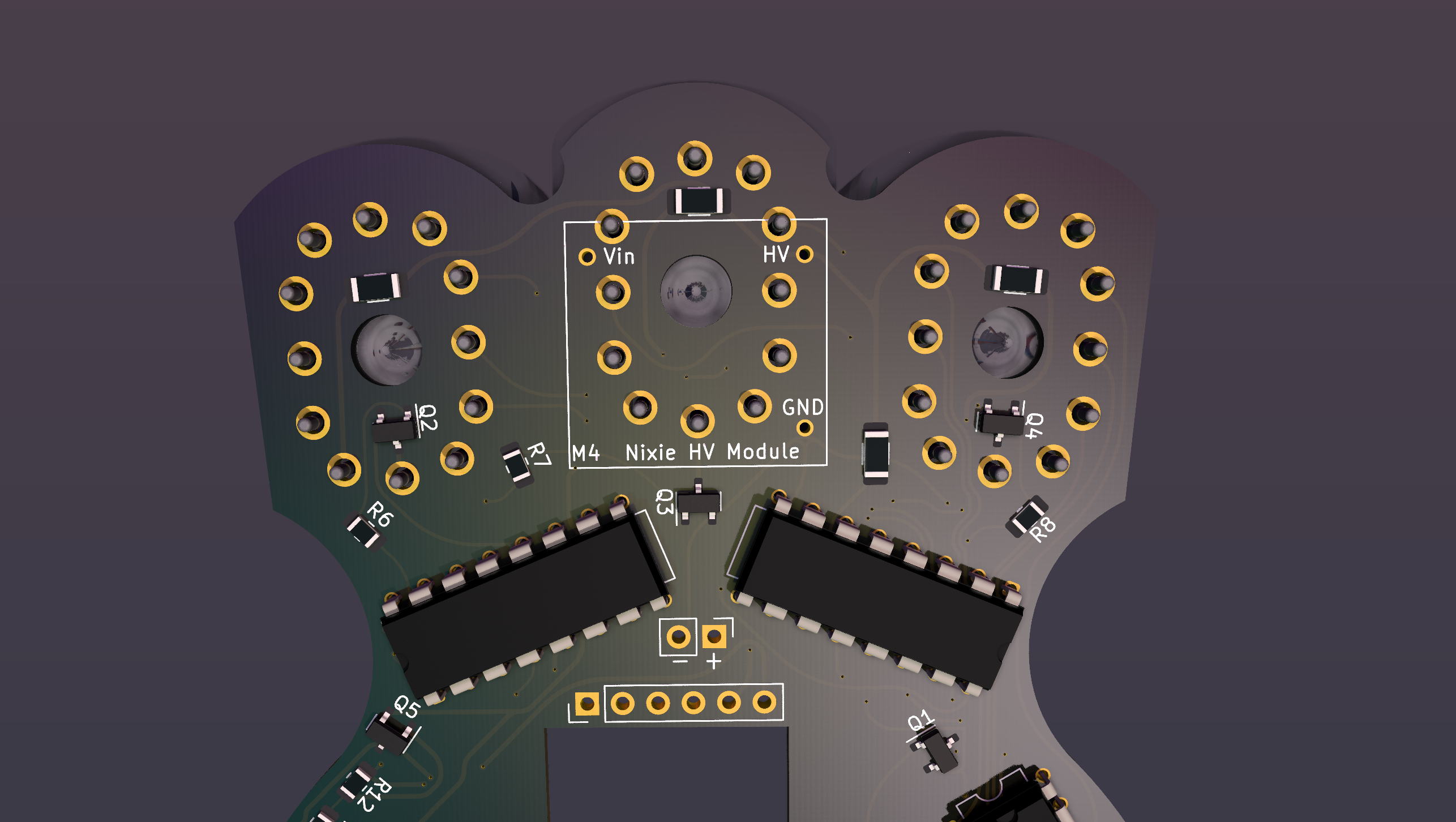
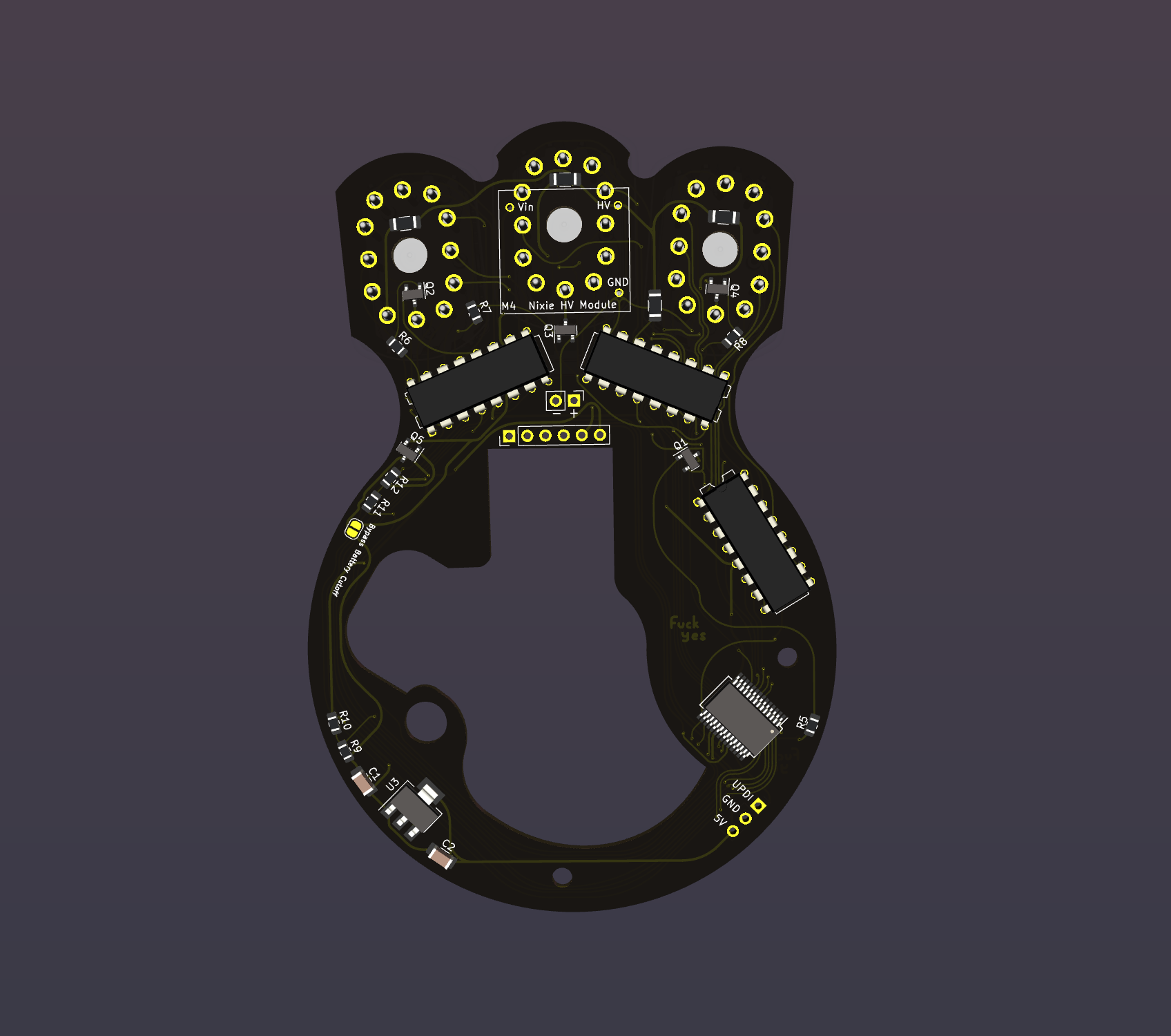
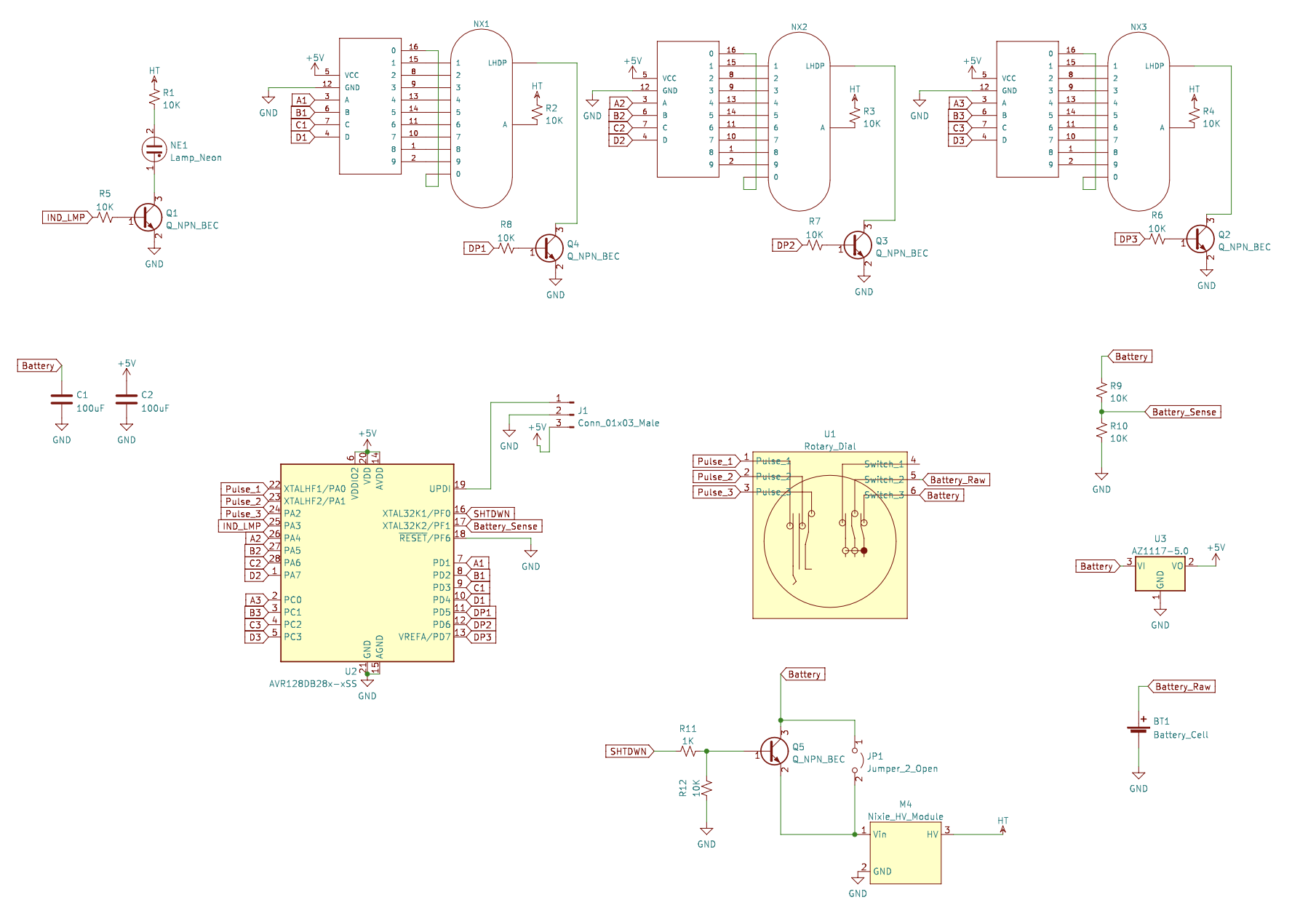
 Kevin Santo Cappuccio
Kevin Santo Cappuccio
Discussions
Become a Hackaday.io Member
Create an account to leave a comment. Already have an account? Log In.